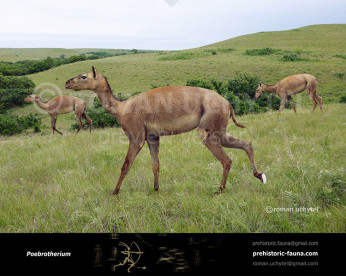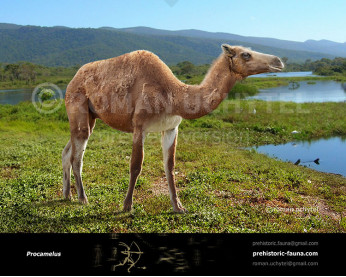Aepycamelus giraffinus
0202Aepycamelus (Aepycamelus Macdonald, 1956)
Order: Artiodactyla
Family: Camelidae
Expansion: Miocene (North America (20.6–4.9 million years ago)
Dimensions: 3,2 m in length, 300 cm in height, 500-800 kg of weight
A typical representative: Aepycamelus giraffinus Macdonald, 1956
Aepycamelus is an extinct genus of camelid, formerly called Alticamelus which lived during the Miocene 20.6-4.9 Ma existing for approximately 15.7 million years.
Aepycamelus walked on its toes only. Unlike earlier species of camelid, they possessed cushioned pads like those of modern camels. Aepycamelus was a prairie dweller of North America (Colorado, etc.). It was a highly specialized animal. Its head was relatively small compared with the rest of its body, its neck was long, as a result of giraffe-like lengthening of the cervical vertebrae, and its legs were long and stilt-like, with the elbow and knee joints on the same level. The top of its head would have been about 3 metres above the ground. ts strange body structure gives us plenty of information on its mode of life and habits. Aepycamelus obviously inhabited dry grasslands with groups of trees. It is presumed to have moved about singly or in small groups, like today's giraffes, and like them, browsed high up in the trees. In this respect it had no competitors, it survived a relatively long time, lasting throughout the entirety of the Miocene epoch, and died out prior to the start of the Pliocene, possibly due to climatic changes.
Aepycamelus (Aepycamelus Macdonald, 1956)
Order: Artiodactyla
Family: Camelidae
Expansion: Miocene (North America (20.6–4.9 million years ago)
Dimensions: 3,2 m in length, 300 cm in height, 500-800 kg of weight
A typical representative: Aepycamelus giraffinus Macdonald, 1956
Aepycamelus is an extinct genus of camelid, formerly called Alticamelus which lived during the Miocene 20.6-4.9 Ma existing for approximately 15.7 million years.
Aepycamelus walked on its toes only. Unlike earlier species of camelid, they possessed cushioned pads like those of modern camels. Aepycamelus was a prairie dweller of North America (Colorado, etc.). It was a highly specialized animal. Its head was relatively small compared with the rest of its body, its neck was long, as a result of giraffe-like lengthening of the cervical vertebrae, and its legs were long and stilt-like, with the elbow and knee joints on the same level. The top of its head would have been about 3 metres above the ground. ts strange body structure gives us plenty of information on its mode of life and habits. Aepycamelus obviously inhabited dry grasslands with groups of trees. It is presumed to have moved about singly or in small groups, like today's giraffes, and like them, browsed high up in the trees. In this respect it had no competitors, it survived a relatively long time, lasting throughout the entirety of the Miocene epoch, and died out prior to the start of the Pliocene, possibly due to climatic changes.

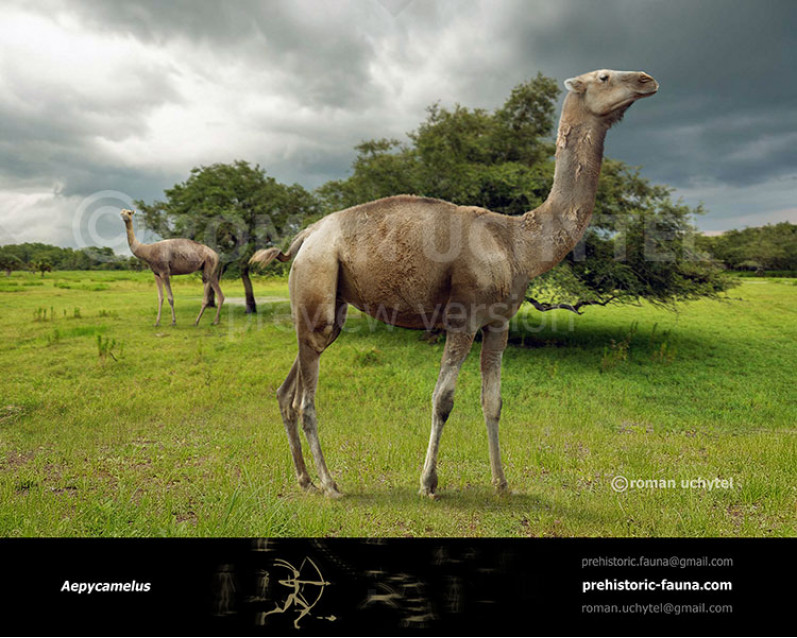
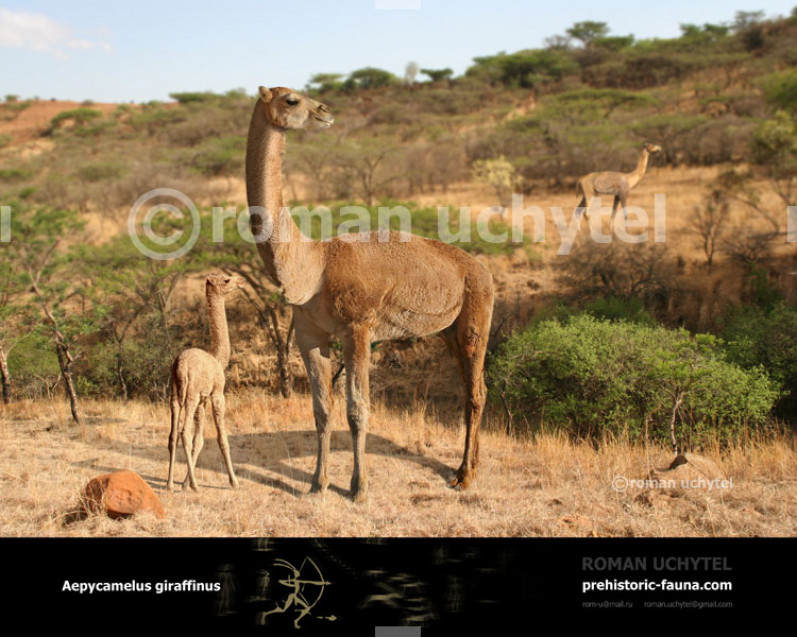
-797x638.jpg)


-70x56.jpg)
-346x277.jpg)
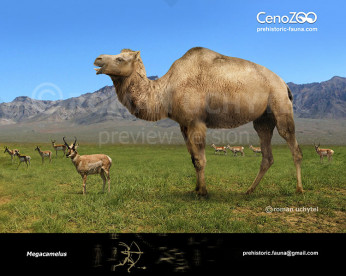
-346x277.jpg)
